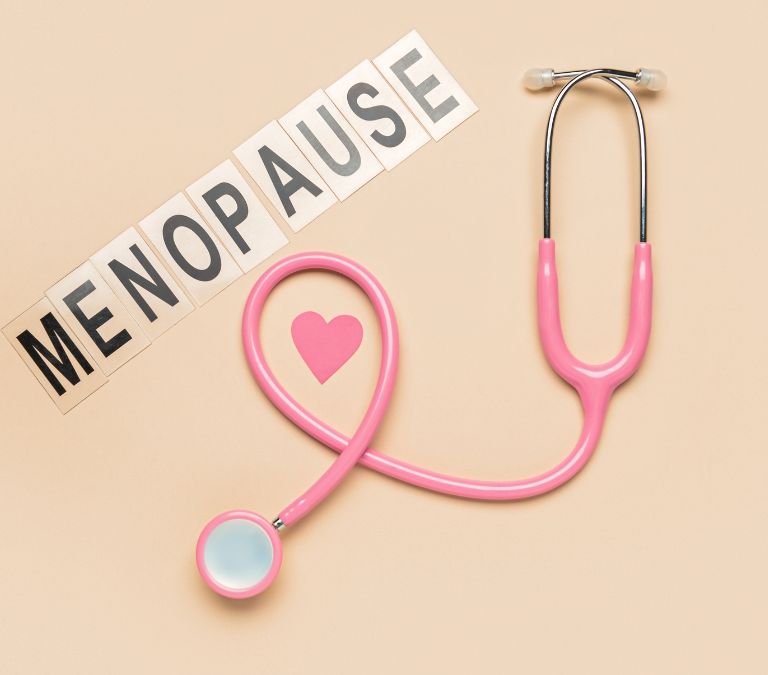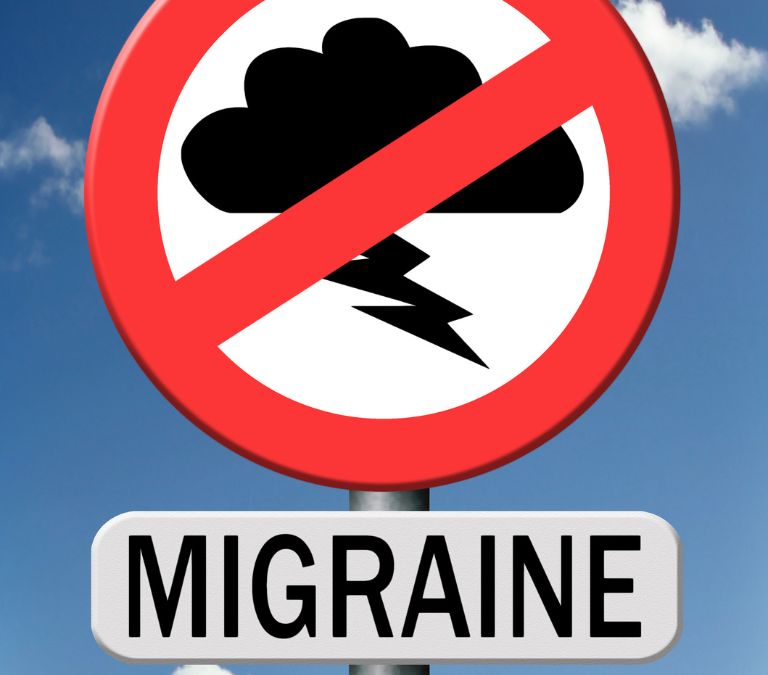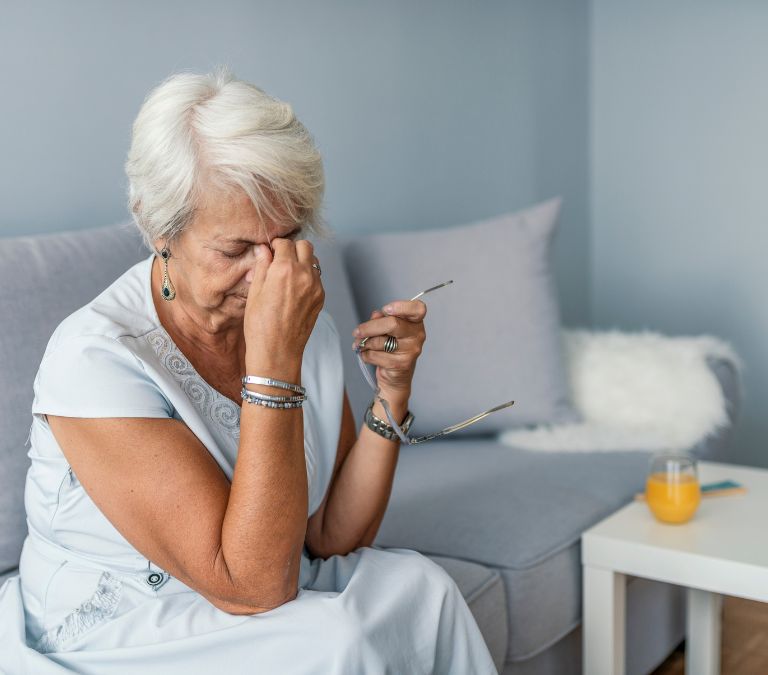You can’t talk about the most common pain conditions without including headaches. In the United States of America, one out of every six people has complained of headaches in the past year, according to available statistics. This is about 16.54% of the population.
When headaches become very severe and painful, migraine is formed. Migraine is a serious disorder characterized by long headaches of long durations, severe pains, and sometimes, other symptoms like phonophobia, photophobia, and nausea.
While underlying diseases can cause headaches and migraines, the primary causes of headaches remain stress and alcohol use. However, they can also be triggered by occurrences like sudden exposure to bright light, stress, and overworking of the brain. So, what happens when menopause causes headaches?
Menopause is a natural transition that every woman has to go through. However, this natural transition can come with some symptoms of varying severity. For some women, menopause is an escape plan from all the problems of the reproductive years.
These women kiss bye-bye to the stress associated with menstruation and the use of contraceptives. For some other women, menopause kick-starts the phase of excruciating discomforts and random complications. For these other women, menopause only brings pain, and they’d rather not experience it.
You must have heard of or experienced the characteristic hot flashes and night sweats. While hot flashes remain the pinnacle of menopausal symptoms, many other symptoms and illnesses are linked to menopause. The list continues anxiety, weight gain, constant inability to sleep, diabetes, breast cancer, vaginal dryness, jeez. To make matters worse, headaches and migraines are added to this list of menopause’s awful side.
Understanding Menopause

Menopause goes beyond just the termination of childbirth. With menopause comes certain complications of varying severity. In the United States, 90% of menopausal women have experienced some degree of hot flashes and night sweats. Going into more severe symptoms, menopausal women are more at risk of being diagnosed with heart and cardiovascular diseases, ovarian tumors, and even breast cancer.
Stages of Menopause
There are three distinct stages of menopause. They are perimenopause, menopause, and postmenopause.
Perimenopause
This is the time that leads to menopause. At this point, the hormones begin to decline, and the menstrual cycle becomes unpredictable. The body may experience some menopausal symptoms during perimenopause even when you aren’t in menopause yet. Perimenopausal women tend to go through the most severe symptoms. This is because the body is starting to go through an abrupt change. Perimenopause can last several years.
Menopause
When the body has gone through perimenopause, the next phase is menopause itself. When a woman experiences no periods for 12 consecutive months, she is automatically in menopause. Menopausal symptoms of varying degrees often plague this period. From hot flashes to night sweats,
Postmenopause
This is the time immediately after menopause. Getting to this phase means remaining there for the rest of your life; your hormonal level stays low, and your monthly period disappears. Your ovaries lose the ability to release eggs, making it impossible to get pregnant. Generally, menopausal symptoms begin to decline as you go further in age. However, these symptoms can stay as long as a decade.
The reproductive system of women is more elaborate when compared to men. This complicated structure of the female reproductive system comes with changes for every stage of growth. From childhood to puberty, adolescence to menopause, these changes come with their effects on the body.
This is why a vast number of diseases experienced by women today are linked to the reproductive system. While menopause often occurs naturally, it does not mean it cannot be triggered by other unnatural factors like medical conditions, surgeries, and medications. Some surgical or medical procedures can lead to menopause. The point where the ovaries become incapable of releasing eggs marks the start of menopause, regardless of its cause.
During menopause, the levels of specific hormones in the body begin to decline. This decline in hormonal levels is the main reason for most symptoms associated with menopause. Hormones like estrogen, progesterone, and testosterone are produced less by the body; therefore, it becomes deficient in them. This deficiency, in turn, causes adverse effects like hot flashes and the inability to get healthy sleep.
Causes of Perimenopause Headaches
Just like other menopausal symptoms, headaches and migraines are caused by fluctuations in hormonal levels in the body. This is why women are three times more likely to suffer migraines and headaches than men. The effect of menopause is different from one woman to another. Your headache might not be as bad as that experienced by another woman. Some women do not even experience headaches throughout their perimenopausal journey.
Since most menopausal headaches are menopausal, postmenopause can be subtle a bit. When you get to post-menopause, the headaches and migraines begin to decline. Why, then, do women experience the most severe headaches during perimenopause?
I’m usually my happiest during weekends. Saturdays, I always wake up before 7, go to the gym, and stay in bed all day. I take Saturdays as my stress-free day. However, something changed One Saturday in January 2013. I woke up at about 9 am on a Saturday. I didn’t care, though. I was only concerned about how to stop my head from making painful beats.
It could be exaggerated, but believe me when I say it felt like my heart was in my head. I tried lying down, dipping my head in water, and even placing ice cubes over my head. After trying so hard, I decided to see the doctor. I looked miserable, and it was very obvious. As I got to the sitting room, the entire family could tell I was in an awful state.
The last time something like this happened was during my period. I sat by the kitchen counter as I phoned my doctor. In less than an hour, the doctor was in the house, and I was keen on telling her how bad my night was. After a series of questions and tests, Doctor Taylor concluded that my hormones were beginning to fluctuate, all thanks to menopause. I was only a few months into menopause, and the migraine I was feeling made me wish I was still in my 20s.
A drop in estrogen can trigger headaches and migraines. During perimenopause, the hormone levels aren’t just low; they swing up and down. During puberty, the estrogen hormone goes through rapid fluctuations. These fluctuations worsen during perimenopause and recede during postmenopause. This is the reason perimenopausal women experience more symptoms than postmenopausal women. Everything is attributed to changes in the levels of hormones in the body.
Associated symptoms of hormonal headaches
While hormonal headaches’ main symptoms are headaches and migraines, other symptoms are still associated with this lingering problem. Some other symptoms of hormonal headaches include:
-
Fatigue
-
Loss of appetite
-
Constipation
-
Craving for alcohol and caffeinated products
-
Joint pain
-
Confusion and lack of coordination
-
Decreased urination
Dealing with Menopause and Migraines

Migraines are painful, and that is a fact. So, when it comes, what do we do? How do we live with it? Mind you, menopause is already looking burdensome at this point. Fortunately for many of us, migraines during menopause can be dealt with. Remedies for migraines caused by hormones vary from lifestyle changes to medications. Regardless, both systems have proven to help to some extent, in dealing with the problem. Some of these ways include:
Drinking Plenty Of Water
Studies have shown that drinking plenty of water has helped better subtly the severity of migraines. This is because when the body gets enough water, the osmolarity level of the body decreases, which in turn balances the concentration of electrolytes. With this, the migraine, if not alleviated, is cushioned.
Engaging in Relaxation Exercises
Relaxation exercises will help you manage migraines effectively. When the mind is stressed, migraine is typically a counter-reaction. This means that helping to relax the mind will help prevent severe migraines.
Hormone Replacement Therapy
This treatment option can help relieve migraines and headaches during menopause by simply replacing hormones at lower levels. It is known that almost all symptoms experienced by menopausal women are caused by hormonal fluctuation.
What HRT does is that it helps the body balance its level of vital hormones like estrogen and progesterone. When these hormones are in little circulation, it can lead to all the symptoms experienced by women in menopause. HRT is typically prescribed to women who are going through menopause and want to lower the severity of the effects of menopausal symptoms.
HRT assists in replenishing hormones that may have dropped to unhealthy levels due to menopause. Because of this, there is a greater likelihood of some hormonal balance within the body. The fluctuations in levels of essential hormones that occur in the bodies of menopausal women are the primary cause of the multitude of unpleasant symptoms associated with menopause.
Mood swings, hot flashes, night sweats, decreased sex drive, and vaginal dryness is some symptoms that can be alleviated with hormone replacement therapy (HRT). The postmenopausal phase of a woman’s life is associated with an increased risk of osteoporosis, which can be helped by hormone replacement therapy (HRT).
Behavioral Therapy
Also referred to as biofeedback, this is a type of relaxation therapy where different techniques are used to control the physical way in which your body reacts to stress, tension, and pain. This therapy has helped so many women deal with the problem of migraines. You are taught stress techniques which include the best way for you to deal with stress when it comes.
Taking Supplements
Nutritional supplements have also shown some success in helping to cushion the occurrence of headaches and migraines. Vitamin B2 and vitamin D supplements can help. Butterbur, magnesium, and coenzyme Q10 can also be beneficial in dealing with migraines. Whatever you do, remember to speak to a doctor first.
Acupuncture
This involves using needles to influence the energy pathways of the body. Originating from the Chinese culture, acupuncture has been adopted to treat many types of pain today. While its effectiveness can vary from woman to woman, it might be the best solution for migraine problems.
Exercises
Regular exercise and other physical activities can help prevent or manage migraines and headaches during menopause. Stop being sedentary. You can start with 30 minutes of exercise on alternate days or thrice a week.
Top 5 Exercises That Will Relieve You of Headaches and Migraines During Perimenopause and Menopause

So many people believe that exercises are one of the main causes of migraines. This is not true. Also, you should know that there is a thin line between headaches and migraines. Headaches can be ignored; migraines cannot be ignored. Constant participation in exercises will help prevent migraines and headaches. However, engaging in vigorous exercise in a sudden time frame can lead to headaches. However, regular participation in physical activities will help you alleviate and not aggravate migraines and headaches. Please do not, however, that it is not advisable to exercise while in the middle of a migraine attack. Instead, wait till you’re pain-free.
Walking, Jogging, Running, Cycling, And Swimming
Moderate-intensity exercises like these have been associated with decreased pain and frequency of migraine. These aerobic exercises can help your body release endorphins, natural painkillers. You can start by walking, and when you feel you can go into more intense activities, then jogging or cycling.
Yoga
Practicing yoga for five days for six weeks and using medications will decrease the intensity and frequency of migraine. When taking medications, it is important to add yoga to them. Women who engage in yoga while taking medications are known to show more improved results than women who go with medications alone. Since yoga helps the body relax, it can help reduce the level of stress and also help the body react differently to attacks. This way, migraine can be reduced.
Tai-Chi
These Chinese martial arts can serve as an effective exercise for women going through menopause. Tai chi has been shown to help people sleep better and lower their blood pressure. Tai chi is practiced by meditating while moving slowly in slow, flowing movements.
For instance, you can count on both feet while making a circle with your hands at a very slow pace. This can be done while moving very slowly. Both your ability to concentrate and your ability to deal with the emotional effects of menopause will improve as a result of this.
Researchers have discovered that engaging in this activity helps lower migraine headaches’ frequency and severity. According to research conducted on forty women, practicing Tai Chi for twelve weeks significantly reduced both the severity of migraine attacks and the number of times they occurred.
Push-Ups and Pull-Ups
The hand and abdominal muscles benefit from this exercise routine’s application. It’s possible that sticking to this routine can help cut down on the frequency and severity of headaches and migraines that come with menopause. In addition, you can use this method to reduce fat and calories in your body.
Menopausal women who have a higher total body fat percentage have a higher risk of developing heart-related conditions. This is the reason why maintaining a routine is so important. It is not possible to place enough emphasis on how straightforward this process is. You can do it in your living space or out in the yard. When ready to push, get on the floor and position yourself on all fours. Spread your hands out, so they are just a little wider than your shoulders.
Slowly lower your body until you reach a point with your chest above the ground. After reaching that point, pause, hold a little, and push yourself back up. Continue carrying out the steps until you reach a point where there are no more options.
Pull-ups, on the other hand, require you to grab a stable bar, pull your body toward the bar until your chest is at the same level as the bar, and then repeat the motion. In most cases, these routines are exhausting, but they are very helpful in assisting with the alleviation of menopausal symptoms such as migraines.
Jump Rope and Jumping Jacks
Not only will these exercises help you stay fit, but they will also help in developing a restful mind, which can, in turn, deal with migraine problems. Jump rope can be used as an alternative to jogging in place and help groom a healthy mind and heart. To engage in this exercise, it is important to stand with both feet together, swing the rope over your body, and then repeatedly jump up and down at a spot. It would help if you began with both feet apart and arms down for jumping jacks. The arms are then raised to the sides while jumping out with the feet apart. This process should be repeated until you feel satisfied with your progress.
Top 5 Foods That Will Relieve You of Headaches and Migraines During Perimenopause and Menopause

How can your diet options influence the frequency and pain of migraines and headaches on you? Some foods can help you relieve headaches, especially the ones caused by menopause.
Mushrooms
Riboflavin is a B vitamin that is effective in treating migraines. Thankfully, mushrooms are a great source of this helpful nutrient. Studies have shown that a 400 mg dose of riboflavin capsule daily can lead to decreased intensity, duration, and frequency of headaches and migraines. Alternatively, you can take mushrooms to help provide your body with all the riboflavin it needs. Mushrooms also contain a substance called psilocybin. Psilocybin can be advantageous to menopausal women suffering from migraine.
Sweet Potatoes
When it comes to beta-carotene, sweet potatoes are excellent sources. Beta-carotene is an anti-inflammatory nutrient, and inflammation has been linked to migraines. As an added advantage, sweet potatoes contain nutrients like copper, manganese, niacin, potassium, vitamin B6, vitamin C, and vitamin B2. All of these nutrients are important not just for the management of menopausal symptoms but for the maintenance of general well-being.
Leafy Greens
As expected, greens still play a role in the management of migraines. Swiss chard, kale, and spinach are loaded with adequate magnesium and folate. These nutrients can help in subsiding headaches. Research has proven that consuming a diet low in folate can increase the frequency and pain of migraines.
With this, it is important to consume more foods with folate content. Also, people with frequent cases of migraine are known to be low magnesium carriers. Thankfully, leafy greens possess all of these nutrients. This is why as menopausal women, we should consume more vegetables. It will help the body with so many things, migraine inclusive.
Bananas
Just like leafy greens, bananas also possess magnesium. The American Migraine Foundation highly recommends the consumption of bananas as an excellent diet option for managing migraine. This is because the calming effects of magnesium are very helpful in the treatment and prevention of migraine.
Avocado
Avocados are excellent sources of omega-3 fatty acids. Generally, omega-3 fatty acids can help fight oxidative stress, migraines, and headaches. It is recommended that you include avocados in your diet. This way, you get its nutritional benefits that could help prevent and treat migraines.
Vitamins That Will Relieve You of Headaches and Migraines During Perimenopause and Menopause.
Vitamin D
Research has shown that a deficiency of vitamin D could cause migraine. Vitamin D is known to help in fighting inflammation in the brain region. Vitamin D can also help in enhancing the absorption power of the brain. This way, magnesium is easily taken into the brain. Also, vitamin D can stop the brain from producing substances that increase during migraine attacks.
Vitamin B2
Also known as riboflavin, vitamin B2 is involved in pathways involved in the production of migraine. Vitamin B2 can help reduce brain inflammation and oxidative stress, which is capable of causing migraine.
Conclusion
Menopause is a transitional phase that every woman would someday pass through, not a disease. When the symptoms become overwhelming, remember that there is always a way of managing them. For migraines and headaches, remember that lifestyle changes, diet changes, and vitamins can help menopausal women manage them effectively.







